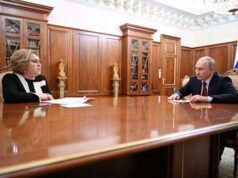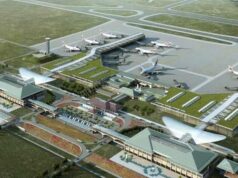The inside story: Mashkoh – Kargil as I saw it # 8
By
Brig Umesh Singh Bawa Vrc, SM

With virtually no cover and Pakistani intruders entrenched all across the ridge in sangars, the advance of my troops was stopped even before it began. The platoon was bloodied so severely by the deadly enemy fire that it finally hit me what we were really up against. My one JCO and five soldiers were martyred and other ten were seriously injured with gunshot wounds. Due to this setback, the morale of the B company was low, and I could not afford this to happen to my troops. Motivation and morale are one of the most crucial battle winning factors.
Next day, on 30 May, I, along with my reconnaissance group, moved to Point 4540, to take stock of the situation and talk to the boys and give them some pep talk to raise their sagging morale. I was walking with my sunglasses and walking stick to assist me in climbing the steep slopes, along with approximately ten men. Probably the enemy observation post was tracking our move. I reached Point 4540 by 1100 hours. I was disappointed that we lost six brave soldiers at the beginning of the operations. I began gathering information. As I was debriefed by the company commander/platoon commanders/others on the mission, it was apparent that there were mistakes made by some individuals during the planning phase and on the battlefield during execution. Identification of the enemy had been insufficient. It outlined the critical failure that had turned the mission into a nightmare and costed life of six soldiers and several others wounded. I stood before the group, “Whose fault was this?” After a few moments of silence, the company commander said, “it was my mistake, I should have planned the operation in detail”. “No”, I responded, “it wasn’t your fault. Whose fault was it?” I asked the group again. More commanders at a lower level were ready to take the blame on themselves and explain what went wrong and how it had contributed to the failure.
The same day afternoon, I left Point 4540 with my protection party at around 1600 hours and motivated my men to stay firm on Point 4540 against all the odds. My brigade commander had asked me to move back after last light as my move could be under enemy observation, but I took it lightly and commenced my move during the day itself. It appears the enemy observation post was tracking my movement, and as I was climbing down the ridge, I was welcomed by a volley of enemy artillery fire around me. We were taken by surprise. In seconds, all men around me vanished behind the nearest rocks to take cover from the fire. I think it was the fastest reaction “dash down crawl”, I had ever seen! Finding myself all alone, I also took shelter behind a rock. Now we were all scattered over the ridge. I told everyone to stay calm, take cover and make no movement till further orders. We waited for the last light, and after that we started moving in ones/twos, maintaining adequate distance between us. I remembered my commander’s advice to commence my move after the last light, but I took it lightly and started my movement after lunch during the day. Sometimes it pays to listen to the sane advice and not be overconfident of the situation. It is often said that the leader should be bold and not foolhardy. I thought I was bold and fearless in front of my men, by climbing down confidently during the daytime, showing that I was not afraid of danger. There is a thin difference between being bold and foolhardy. You are bold if you take calculated risks with due precautions and you are foolhardy if you take risks without adequate safeguards. In this case, I think I was foolhardy and careless as knowing very well that we were under enemy observation, I decided to commence my move during day time instead of moving after last light. Thank god we were all safe or else my foolhardiness could have costed few lives. I did not inform about this incident to my brigade commander; else he would have blown his lid off on me.
In the meanwhile, my brigade commander was very upset due to the casualties that we had suffered and started blaming the company commander for not training his men in battle craft/fieldcraft and not taking adequate precautions to save their lives. Perhaps, my commander thought that the lives were lost in an encounter with the militants. I had to explain to him that they were up against the fire of eight machine gun fire, simultaneously from different directions, from a well-fortified defence based on stone sangars. I also urged him that we should appreciate the intense fight given by these soldiers. They sacrificed their lives for the country in the face of enemy fire assault at such trying conditions. We should not blame the company commander and his subordinate commanders and men for lack of training. It is war, and we will have casualties in such a situation, and we should be ready to accept them as one of the ironies of war!
My unit had been deployed in counter-insurgency operations since Dec 1997. There is a vast difference in conducting counter-insurgency operations and mountain warfare in high altitude area. Time is required for adapting battle drills and battle procedures from one form of combat to another. Therefore, the subunits and the troops needed to be given adequate time to adjust to conventional operations, at least 10-15 days. There was a need to get down to the basics and brush up skills in minor tactics in the mountains at the level of section, platoon and company. I should have asked my brigade commander for some more time to organise orientation training for my troops, before taking them for assault in high altitude mountains. But at that time all senior commanders were under immense pressure to tackle the enemy intrusions without loss of time.
“But somebody has to take the blame for the failure and loss of six precious lives.” said my commander. I had to tell him that there is only one person to be blamed for this fiasco and that is me. “I am the commanding officer. I am responsible for the entire operation and every action that takes place on the battlefield. There is no one to blame but me. And I will tell you this right now; I will make sure that nothing like this happens to us again.” It was a heavy burden to bear. But it was correct. I was the leader. I was in charge, and I was responsible. Thus, I have to take responsibility for everything that went wrong. It was the right thing to do and the only thing to do. Well, I think I was able to put the stuff in the proper perspective to my boss. He understood the situation and mental agony I was going through on losing my men and not being able to retrieve their bodies due to continuous enemy fire.
Looking back, it is clear that, despite what happened, the full responsibility I took for the situation increased the trust my brigade commander had in me. If I had tried to pass the blame on to my subordinates, I suspect it would have been wrong. My officers and men did not expect me to take the blame, respected the fact that I had taken full responsibility for everything that happened. It increased their trust in their commanding officer.
The bodies of those six soldiers were still lying approximately 100 meters from the enemy position. We sent a strong patrol to retrieve the bodies earlier during the day, but the enemy fired at them, forcing them to retreat. Despite raising a ‘white flag’ indicating our desire to retrieve our dead bodies, the enemy continued to engage us with fire. As per the Geneva Convention, it is the bounden duty of both the conflicting parties to respect the dead and prevent their bodies from being despoiled. But Pakistan Army behaved in a most unprofessional manner and prevented us from retrieving our fallen soldiers. I thought that we should not risk the lives of my soldiers salvaging the fallen comrades at this juncture, because preservation of the fighting strength was more important at this early stage of the battle. It was quite disheartening for the soldiers who could not pick their fallen comrades, but this became a turning point of my combat. Manipulation of human relations is the art of military leadership. I used this as a motivation for the men to capture Point 4875. We vowed to take revenge with the utmost vigour and capture Point 4875 so that we could retrieve the bodies of our fallen soldiers.
On 28 May, we were at Dras location for some meeting with the brigade commander of 56 Mountain Brigade. That day four attack helicopters had come to Matayan helipad for use against the enemy defences at Tiger hill, for the first time. We were witnessing the operation from Dras. As the four helicopters dived down to engage the enemy in Tiger hill, one of the helicopters was hit by the enemy stinger missiles, and we saw the aircraft come tumbling down the steep slopes of the hill and was up in flames. It was a terrible sight to witness our helicopter falling with two pilots and two crew members lost in that incident. It did lower our morale to lose one of the attack helicopters with the crew in front of us. After this, the Air Force decided against the use of helicopters in the offensive role as they were not suited to operate at such high altitudes. It was clear that the enemy was well armed with anti-aircraft stinger missiles to deal with the threat from the air.



